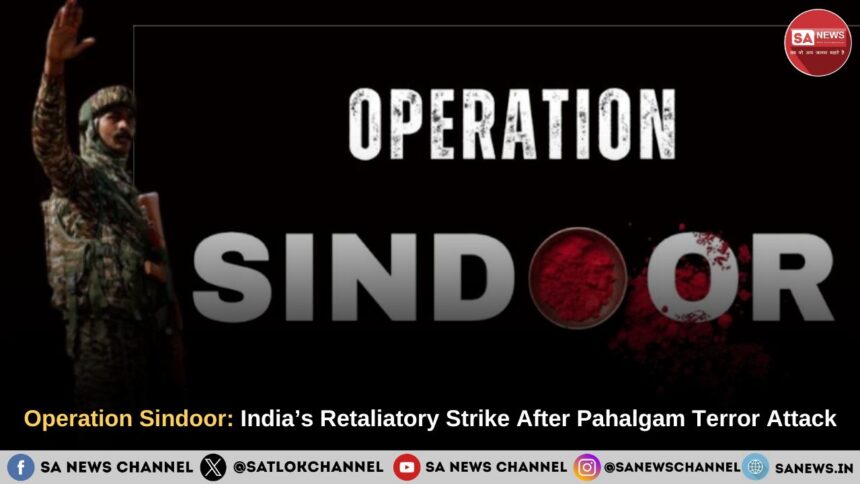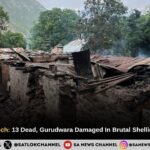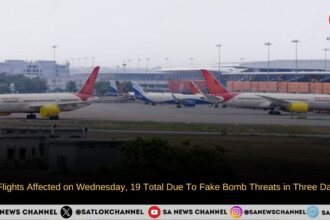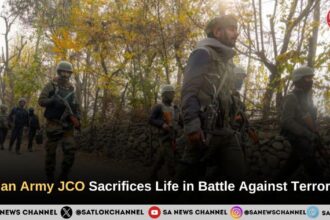On April 22, a brutal terrorist attack shook the peaceful town of Pahalgam in Jammu and Kashmir, claiming many innocent civilian lives. The attack, reportedly orchestrated by Pakistan-based terrorist groups, crossed a dangerous red line. In response, India launched a carefully calculated operation named Operation Sindoor—a move aimed at dismantling terrorist infrastructures across Pakistan and Pakistan-occupied Jammu and Kashmir (PoK).
What Was Operation Sindoor?
Operation Sindoor was a precision air and ground strike conducted by the Indian Air Force (IAF) and Indian Army. The mission targeted nine terror facilities run by groups such as Jaish-e-Mohammed (JeM), Lashkar-e-Taiba (LeT), and Hizbul Mujahideen. These organizations have long been responsible for planning and executing deadly attacks on Indian soil.
Key Objectives of the Operation Sindoor
- Neutralize terrorist training and launch facilities
- Minimize collateral damage
- Avoid Pakistani military assets to prevent wider escalation
- Send a strong message against cross-border terrorism
Operation Sindoor: Where Did the Strikes Take Place?
The Indian armed forces struck with surgical precision across two major regions:
1. Inside Pakistan
- JeM Headquarters in Bahawalpur
- LeT Operational Base in Muridke
- Hizbul Mujahideen Camp in Sialkot
- JeM Facility in Sarjal
2. In Pakistan-Occupied Jammu and Kashmir (PoK)
- LeT Bomber Camp in Kotli
- Terror Training Centers in Muzaffarabad
- Barnala, Bilal Camp, and Shwawai Nalla Camp
These sites were under constant surveillance and had been identified as active hubs for terrorist training, recruitment, and planning.
Also Read: Do You Think Women Can’t Lead Armies? Think Again – The Sofiya Qureshi Biography
Operation Sindoor: India’s Tactical Edge
India used precision-guided munitions to ensure minimal civilian harm. Unlike full-scale warfare, Operation Sindoor was designed to be non-escalatory, focusing only on anti-terror targets.
The Indian forces showcased professionalism and restraint, avoiding any confrontation with the Pakistani military. This distinction is critical—it sends a global message that India’s fight is against terrorism, not any particular country.
How Did Pakistan React?
Operation Sindoor: Following the strikes, Pakistan placed its air force on high alert. There were reports of radar systems and border units being mobilized. However, there was no immediate retaliatory strike.
In India, air travel was disrupted in northern cities such as:
- Srinagar
- Jammu
- Amritsar
- Leh
- Chandigarh
- Dharamshala
- Bikaner
Educational institutions in Jammu and Kashmir were also temporarily closed as a safety measure. Border patrols were strengthened to monitor further threats.
Global Reaction and Strategic Impact of Operation Sindoor
The international community responded with cautious concern. Many global powers have called for restraint and diplomatic dialogue to avoid any rise in tension between the two nuclear-armed neighbors.
Read in Hindi: ऑपरेशन सिंदूर: पाकिस्तान के 9 आतंकी ठिकानों पर भारत की एयर स्ट्राइक, 100 से अधिक आतंकी ढेर
However, most observers acknowledged India’s right to self-defense. The precision and limited scope of the operation helped maintain regional stability, even as India sent a clear message: terrorism will not go unanswered.
Operation Sindoor: India’s Broader Message Against Terrorism
By targeting terrorist infrastructure directly and avoiding wider military escalation, India reinforced its policy of zero tolerance toward terrorism. This move reflects a new doctrine—swift, sharp, and strategic.
Why This Matters
- It discourages state-backed terrorism
- Shows India’s military capability and intelligence reach
- Strengthens India’s global image as a responsible power
- Acts as a deterrent for future attacks
Final Thoughts: What Lies Ahead of Operation Sindoor?
While India achieved its immediate goal through Operation Sindoor, the post-strike phase is just as critical. Both nations must now navigate this sensitive period with caution and responsibility.
India has made it clear—it does not seek war, but it will defend its citizens and sovereignty at all costs. The world is watching how the region responds. Dialogue, de-escalation, and diplomacy are the need of the hour.









